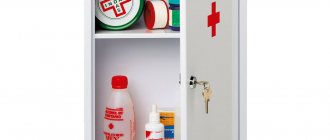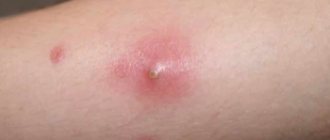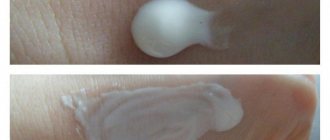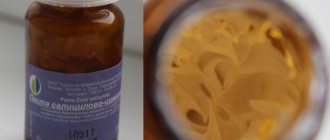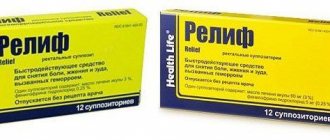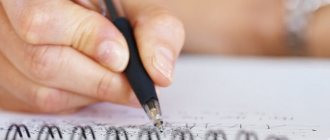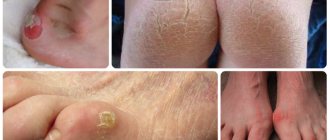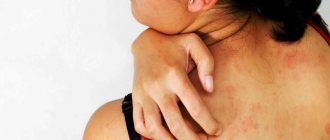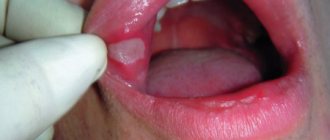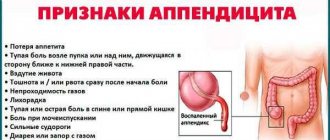01.03.201928.10.2019 Olga Migunova
Cuts, scratches, burns - no one is safe from them. It’s stupid to go to the doctor with such a trifle, but it’s also not good to leave the wound without “ambulance”, otherwise it may repay you with suppuration or the development of more serious complications. Every family should keep wound healing ointment in their first aid kit, which will help speed up the regenerative process. And if you have children, then you simply cannot do without wound healing agents. The curiosity and fearlessness of little fidgets often lead to abrasions and broken knees - you simply must be able to treat them.
In order for the skin to recover quickly, the drug must be selected and used correctly. Today we will look at the most affordable, popular and sought-after ointments, and you will choose which ones you need to purchase for your home medicine cabinet.
Healing ointment for effective wound treatment
Any wound is a violation of the integrity of the skin. Open injuries go through 3 stages of healing. At first, the wound should clean itself.
Inflammation occurs. Depending on how self-cleansing has occurred, the inflammatory process can be more or less pronounced. The last stage is granulation and healing.
Special ointments should be used only for 2-3 days. Before this period, products are used in the form of a solution or powder.
The main criterion for choosing agents is antiseptic and anti-inflammatory action. So that the composition dries the skin, disinfects the surface and promotes tissue regeneration.
Ointments containing an antibiotic have proven to be most effective for open wounds:
- Levomekol. Able to penetrate to the source of infection, has a disinfecting and anti-inflammatory effect.
- Ichthyol ointment. Has local anti-inflammatory and antiseptic effects. Eliminates itching, accelerates tissue regeneration processes.
- Vishnevsky's liniment. Despite the unpleasant odor, it was highly praised for its antiseptic properties. Suitable for application to wounds in case of purulent processes.
- Methyluracil. Has a strong analgesic effect.
- D-panthenol. One of the most common types of ointment compositions. It has a high content of vitamins and helps skin regeneration.
- Solcoseryl. Contains a natural biological component that helps collagen synthesis.
- Baneocin. Earned popularity due to its effectiveness. Contains 2 types of antibiotics.
Healing process
If the injury oozes and does not heal for a long time, there is a possibility of a secondary infection. As a result, a wet surface is formed.
The immune system tries to fight inflammation on its own, and the production of excess blood plasma increases.
On the foot
Damage to the skin on the leg with the release of fluid occurs as a result of injuries, varicose or erysipelas, thrombosis, thrombophlebitis, and diabetes.
The main goal of treatment is to create a systematic outflow of fluid. When purulent fluid accumulates, inflammation spreads to nearby tissues.
In a hospital setting:
- Treatment with antibacterial solutions (Dioxidin);
- For painful symptoms, painkillers are used (lidocaine spray, Xylocaine);
- To cleanse necrotic masses, trypsin powder is used (a napkin is moistened with the drug and applied to the affected area).
For shallow, weeping injuries on the legs, therapy is carried out at home. Salicylic or Ichthyol ointment is used.
Streptocide (tablets or powder) is used as an antiseptic. Before applying ointment compositions, the skin is treated with hydrogen peroxide.
Reasons for long delays
Weeping wounds that do not heal for a long time indicate the presence of pathology in the body and the addition of an infection.
Why skin abrasions do not heal:
- Improper treatment of wound surfaces.
- Diabetes. When the disease occurs, the limbs swell, blood circulation is impaired, and the activity of the immune system decreases. Skin cells lack nutrition.
- Age criteria. The immune system of older people is weakened. The body is unable to fight inflammatory processes on its own, and regeneration slows down.
- Lack of vitamins in the body. The wound does not heal with vitamin deficiency.
Cell regeneration slows down in people diagnosed with cancer, obesity, exhaustion, HIV.
Liquid oozing
The fluid that oozes from the wound is lymph. Its release is a normal, natural phenomenon. It removes salt impurities, proteins, toxins, and water from tissue structures. Then it returns them to the circulatory system.
If the ichor is not released abundantly, there is no cause for concern. Carry out the prescribed course of treatment.
The abundant flow of lymph from the wound surface is affected by:
- Poor quality leather processing;
- Polluted ecology;
- Alcohol and nicotine;
- The presence of vascular and dermatological pathologies;
- Excessive physical activity.
If there is an abundance of fluid secreted, you should consult a doctor.
Directions for use and permissible dosages
Each ointment or cream for healing cuts has its own specific method of application and timing of use. It is important to strictly follow the dosage and not exceed the permissible period of use of medications. Many of them contain strong antiseptic components and antibiotics.
Levomekol is applied only to the cleaned surface in a thin layer. When using it for open wounds, it is allowed to use the ointment in the form of a compress on a sterile napkin. Multiplicity of applications from 2 times depending on the complexity of the situation. The treatment period ranges from 5 to 14 days.
Ichthyol ointment can be used in two ways. In the first case, it is applied to the damaged area and rubbed until a feeling of warmth appears. In the second, apply a thin layer and cover with a napkin. Bandages are changed daily. The duration of treatment is determined by the doctor.
Vishnevsky's liniment is applied to open wounds in a loose layer so that the entire damaged surface is filled. Dressings are carried out 2-3 times a day.
Methyluracil is applied to the damaged area 1-2 times a day. To enhance the effect, it allows the use of film or compress paper. The duration of treatment is 2-4 weeks. Take a break for 10 days and then repeat the course if necessary.
D-Panthenol cream or ointment can be used several times a day until symptoms disappear completely. When treating cracked breasts, apply after each feeding of the child.
Solcoseryl cream or ointment is applied 1 to 3 times a day. It can be used under a bandage. The duration of treatment depends on complete healing of the wound and the appearance of scar tissue. It is recommended to use preparations for scar resorption.
Baneocin is applied to damaged areas of the skin 2 to 4 times, depending on the form of the drug. Do not exceed the permissible dosage of the active substance. It is 1 gram per day. The duration of treatment is determined by the doctor.
Open purulent wound
Wounds containing purulent exudate are formed as a result of a violation of the integrity of the skin. The lumen is filled with purulent contents, and inflammation is noted at the edges. The causes of the pathology are infection of a clean wound or breakthrough of an abscess.
- Antibacterial drugs;
- Detoxification measures (toxins are removed from the body);
- Medicines that stimulate the immune system.
The goal of treatment when a purulent focus forms is to clean the open wound, reduce inflammation, and eliminate pathogenic bacteria.
To accelerate the process of skin regeneration, the following is prescribed:
- Vishnevsky ointment;
- Synthomycin liniment;
- Tetracycline ointment composition.
Medicines are applied to a bandage. Use once a day, preferably before bedtime. To eliminate pus from large wounds, drainage is installed.
We influence the resulting abrasions
Abrasions are a type of injury that occurs frequently, especially in childhood. To prevent them from causing trouble, it is important to apply the healing composition on time.
It will relieve inflammation, disinfect the surface, and heal microcracks in the skin.
Thanks to the action of the ointment, infection of the deeper layers of the skin will be prevented, and the formation of a scar or scar after the skin has healed:
- Balm Rescuer. This remedy is one of the most popular for treating minor abrasions, wounds and burns. It contains sea buckthorn oil, beeswax components and other active ingredients. Thanks to the action of the Rescuer, the pain syndrome goes away and the skin calms down. It leads to healing of damage. The advantage of this product is its safety. The rescuer is suitable for use in early childhood, pregnancy and lactation.
- The keeper. Created on the basis of propolis, eucalyptus, sea buckthorn, lavender oils. It contains vitamin E. The product is an analogue of Rescue Balm. Suitable for treating bruises, abrasions, small wounds, cuts, skin rash. It has a bactericidal, anti-inflammatory and analgesic agent.
- Cream D-Panthenol. The product is an analogue of Bepanten. Suitable for healing the skin, eliminating inflammation and dryness. Shown to be highly effective for dermatitis, burns, and violation of the integrity of the epidermis. Actively used in gynecology.
When treating abrasions, products that do not contain local antibiotics and hormonal substances are used. The main task of creams and ointments is local anti-inflammatory effect and tissue regeneration.
Indications for use of ointments
Skin is a person's protective shell. Violation of its integument can lead to inflammatory processes and even blood poisoning. Any wound is an open door through which harmful bacteria enter the bloodstream and can lead to unpleasant and sometimes serious consequences. If the wound is not treated in time, an infection can enter the body and cause a lot of trouble.
For any damage to the epidermis, it is necessary to use wound healing agents to restore the wounded area of skin as soon as possible.
The ointment should be used when:
- burns;
- deep scratches, cuts and abrasions;
- cracks in the toes and heels;
- suppuration;
- trophic ulcers;
- dermatoses.
The best medicines for cuts
A cut is an unpleasant type of skin injury. Small in length, it may differ in depth. As a result of constant movement, the skin separates, which helps the wound heal slowly.
To treat deep cuts, it is necessary to use products that will promote skin regeneration. Medical glue BF-6 has shown high efficiency for this type of damage.
The glue is applied in a thin layer to the wound. As a result, a thin film is formed that does not get wet in water. This allows the patient to lead a normal life without worrying about bacteria getting into the wound site. Glue is actively used in surgery and dentistry. It does not cause an allergic reaction and helps rapid healing of damage.
The action of the glue is based on the seamless connection of the skin. The code shrinks under the action of glue. Thanks to the antiseptic and disinfecting properties, the inflammatory process in the wound stops. Complete healing occurs within 3-4 days.
In addition to medical glue, Streptocid has earned positive reviews in the treatment of cuts. It has an antiseptic effect. Balm Rescuer will relieve pain, disinfect the wound and accelerate tissue regeneration.
Appolo gel showed high efficiency. It contains miramistin and anicolaine, which provides it with high antiseptic and analgesic properties. Ointments and gels for treating cuts require the application of a sterile dressing and its constant replacement.
https://feedmed.ru/fitoterapiya/mazi/zazhivlyayushhaya-otkrytyh-ran.html
Folk remedies for wound healing
Healing ointments for the skin are not always on hand, so if you are injured, you can use one of the folk recipes.
- The common houseplant aloe has many healing properties and is used for various diseases. Squeeze the juice onto the wound - it has a bactericidal effect, will prevent inflammation and will quickly restore the integrity of the integument.
- The juice of Kalanchoe (crassula), another plant that often lives on our windowsills, will quickly heal cuts and abrasions.
- Plantain. Who doesn’t know about its healing properties? Tear off a leaf and chop it, and then apply it to the wound.
- Fresh yarrow gruel will quickly stop bleeding and help the cut heal.
- Beetroot juice is good for minor cuts and scrapes.
- Natural ground coffee will help stop the bleeding; just sprinkle it on the wound and the bleeding will stop immediately. You can then wash the cut with peroxide and bandage it.
- Ordinary foil has antiseptic properties. Place it on the wound and fix it, literally in a few days there will be no trace of the injury.
- Thanks to its strong antiseptic properties, onions promote the rapid resorption of purulent abscesses.
- Honey has excellent wound healing abilities.
Effective and fast-acting ointments
Wounds appear frequently. Sometimes they occur in inconvenient places, where they require rapid healing. Use a proven product. There are a number of remedies that have shown high effectiveness in treating damage.
They have a broad effect and give immediate results:
- Baneocin. In the pharmacy you can find it in the form of an ointment or powder. The powder form is most effective for primary skin damage. The presence of corn starch allows you to create a protective crust on the wound. Antibiotics protect against infection. After the protective layer of the skin appears, Baneocin ointment is used. It contains 2 types of antibiotics and lanolin. This combination helps prevent cracking of the crust on the wound and the penetration of microbes. The product is suitable for the treatment of long-term non-healing wounds, boils, umbilical wounds and other types of skin damage.
- Eplan. The product has received the title of universal due to its wide range of applications. It is distinguished by a strong anti-infective effect. Eplan has an analgesic effect and significantly reduces skin recovery time. The product is suitable for use at different stages of healing, for burns of varying severity, frostbite, eczema, and herpes. Eplan has become widespread due to its release forms.
Healing time and consequences
The speed of wound healing varies from person to person. It all depends on the age, size and nature of the injury, conditions of care and even the time of year. In children, the recovery process is much faster than in adults. In winter, wounds heal much worse than in summer, this is due to slow metabolic processes during the cold season.
With proper wound care, the healing process will take 1 to 2 weeks. If the damage is deep, it can take up to 2 months.
Important importance is given to the quality of first aid and subsequent treatment of the wound. The site of injury must be protected from germs, use antiseptics daily and change the bandage. All procedures must be performed under sterile conditions. If you do not follow the rules of antiseptics, there is a high risk of infection, which can lead to blood poisoning, sepsis, gangrene and even human death.
Using Lokoid ointment
Lokoid is a hormonal-based drug. Its main task is the treatment of superficial non-infected skin diseases. It has shown the greatest effectiveness in the treatment of eczema, dermatitis, and psoriasis.
Most people who have used the product note that Lokoid quickly relieves itching, reduces swelling, and helps eliminate the inflammatory process on the skin.
The drug should not be applied to skin where there are open wounds or scratches.
The drug is available in the form of ointment and cream and is intended for use in children after 6 months. It has been praised for its effective itching relief, anti-inflammatory and antiseptic properties.
The cream is prescribed only for damage to the upper layers of the skin; it does not have a serious cumulative effect and does not work if the infection spreads to the deeper layers of the skin.
The drug is not suitable for the treatment of open skin lesions. It is indicated for psoriasis, dermatitis, lichen, seborrhea.
Prevention and general recommendations
It is impossible to completely eliminate the appearance of wounds on the skin, but in order for the recovery process to go faster, it is important to know some rules:
- After breaking the integrity of the skin, the damaged area must be treated with an antiseptic and a sterile bandage applied.
- For several days, you need to treat the wound with an antiseptic and monitor its condition. If redness, pain, or increased local temperature appear, you should consult a doctor.
- It is important to protect the injury site from moisture and ensure that the wound is dry.
- In the first days after injury, there is no need to use ointments for healing. It is enough to wash the wound. But in case of suppuration, antibiotic ointments can be used.
- A healthy and fortified diet will help boost immunity and provide the body with essential nutrients.
- Self-medication must be avoided.
- If a person has a history of diseases that affect wound healing, it is better to immediately contact a specialist (surgeon) for additional recommendations.
By following these rules, you can not only speed up the healing of the skin after an injury, but also eliminate possible complications. There is no need to self-medicate. The sooner a person seeks medical help, the greater the chance of successful recovery.
Products for weeping wounds
A weeping wound differs from other types of skin injuries in its appearance. The tissues are injured, blood or ichor is constantly released at the wound site. The presence of infiltrate makes the surface of the wound constantly moist.
Wounds appear more often as a result of thermal, chemical or sunburn. They will be the result of bedsores in bedridden patients, inflammation of the skin, calluses or corns. Causes of weeping wounds include abraded skin or an open cut.
When treating weeping wounds, the first task is to clean and dry the surface. The release of ichor is a positive thing. It allows bacteria to come to the surface, but this is a big risk for infection.
The wound is cleaned with antiseptic compounds and dried. A healing composition is used; it is forbidden to use cream for a weeping wound.
Only gel or ointment is allowed.
Heals wounds:
- Gel Fuzidin. This product belongs to the category of bacteriostatic antibiotics. Suitable for the treatment of weeping wounds, burns, furunculosis, purulent diseases. Relieves tissue swelling, reduces inflammation, heals tissue.
- Levosin ointment. The product is suitable for external use only. The main effect is antibacterial and anesthetic. The main contraindication to this remedy is individual sensitivity. Allows use during pregnancy and lactation under medical supervision.
- Solcoseryl gel. The product is easily absorbed. It does not create a film on the surface of the wound. Thanks to the action of Solcoseryl, the wound quickly dries out and is cleared of purulent formations. The composition of the gel activates the regenerative functions of the skin, which helps rapid healing.
In addition to those listed, there are other drugs on the market. Only the attending physician can prescribe the most suitable one. Levomekol has received high marks from practicing surgeons for its effectiveness.
Oftalmoferon is the best first aid remedy for eye injuries
Photo: nebolet.com
The cost of a bottle of 10 ml solution. is about 270 rubles.
Advantages . Unfortunately, wounds can appear on more than just the skin. The proverbial apple of your eye suffers from injuries no less often than your knees or elbows. But if a cut on a finger can be treated with ordinary brilliant green, then in case of eye injuries such a first aid remedy will lead to irreversible consequences.
Ophthalmoferon is a broad-spectrum ophthalmic drop that has an antimicrobial, anti-inflammatory, regenerating, and analgesic effect. In fact, these drops are intended to treat diseases accompanied by damage to eye tissue. But a foreign body or burn (a fairly common injury when cooking any dish in boiling oil) needs quick and correct assistance. Ophthalmoferon will relieve symptoms and give you time to get to the doctor without the risk of adding a bunch of infections to your injury.
Flaws . The only identified drawback of Oftalmoferon is the dislike of many people for dropping anything into their eyes. But this does not apply to the effectiveness and safety of the drug, so it has no “cons”.
Conclusions . The best first aid remedy for eye injuries and for the treatment of a wide range of infectious and inflammatory diseases. 10 points out of 10!
Reviews . “I don’t presume to criticize other drugs, but compared to them, Oftalmoferon drops are simply excellent. It took us three days to get rid of conjunctivitis, while the grandson, who was left for the summer, took the medicine perfectly. The eyes did not sting, there was no irritation. written down as mandatory for the first aid kit.”
Post-operative ointments and creams
In the postoperative period, it is necessary to pay attention to the process of tissue regeneration and restoration. It is necessary to remove the possible inflammatory process and prevent pathogenic bacteria from entering the suture area.
At a normal level of health, the postoperative suture closes quickly.
Stages of the recovery period:
- Formation of a collagen layer. It is necessary to strengthen the scar and eliminate skin defects.
- Transition of the epithelial layer of skin throughout the wound. Already 5 days after the operation, tissue functions are restored if there is no infection.
- Contraction of skin tissue. The final stage of recovery, when the entire wound contracts and heals.
To make these stages go faster, use ointments and creams.
Depending on the complexity of the seam, they come in 2 categories:
- For shallow, surface seams. Products with a simple composition are used. Their main task is to soften and absorb the scar.
- For deep seams. Hormonal compounds are used.
All ointments contain vitamins, essential oils, and minerals that have an anti-inflammatory effect and help lighten the scar:
- Stellanin belongs to the new generation category. It helps rapid healing and relieves inflammation.
- Levomekol. It is well known and belongs to the category of accessible ones. Suitable for use after suture removal. It is distinguished by its bactericidal effect.
- Dioxysol. The drug has shown effectiveness in the treatment of inflamed sutures, abscesses, paraproctitis, purulent sutures and fistulas. The product contains lidocaine, so Dioxyzol has an anti-inflammatory and anesthetic effect.
- Bepanthen cream. Suitable for healing scars and other types of wounds. It activates regenerative processes in tissues, which helps rapid healing.
What you need to know
- The wound does not heal on its own, but thanks to the body’s resources aimed at healing it. This is a complex process in which the immune, circulatory, enzyme, and endocrine systems take part. To speed up wound healing, it will be great if you start taking vitamins C, B6 and B12, or a vitamin-mineral complex containing them. This will support the immune system and reduce the likelihood of complications if the wound is really deep.
- If during the first day after the start of treatment of a purulent wound it does not dry out, and the skin around the wound looks reddened and feels warmer when touched than in other areas, you should definitely consult a doctor. You may need a bacterial culture of the wound contents to identify the pathogen and the prescription of local or systemic antibacterial drugs.
- The main mistake that many “wounded” people make is watering the injured area with brilliant green or iodine. These drugs are used to treat the edges of wounds, and the wound itself can be poured with hydrogen peroxide from the heart. The sensations will be the same, but the risk of giving yourself a chemical burn will be reduced to zero.
- The principles of treatment of mechanical, thermal and chemical damage to the skin differ significantly. Therefore, independent selection of drugs for wound healing is recommended only for mechanical injuries with a small wound surface and depth, not accompanied by severe bleeding. Otherwise, go to your doctor or emergency room.
Attention! There are contraindications, consultation with a specialist is required
Are there any contraindications and side effects?
Every medicine, even the most harmless one, has contraindications. Most often they are associated with personal intolerance to some component or an allergic reaction.
Before you start using a cream or ointment, read the instructions and decide whether the product is contraindicated for you. During initial use, proceed with caution to identify any allergic reaction, if any.
Important! Most healing face creams have no contraindications. As a rule, you can use the product without first contacting a medical specialist.
For burns
For burns, the choice of treatment and duration of treatment depends on factors such as the area affected and the depth of the burn.
Panthenol
It is a white foamy cream, available in the form of an aerosol. Often found in home medicine cabinets as a remedy for burns sustained in the kitchen.
The product is quickly absorbed from the surface of the skin and promotes rapid healing.
Indications for use:
- abrasions;
- burns of various origins;
- dermatitis;
- skin grafting;
- aseptic postoperative wounds;
- cracked nipples during lactation.
Levomekol
The ointment is very effective in the treatment of infected wounds and burns, since it has a bacteriostatic effect against a large number of bacteria.
Used to treat:
- deep burns;
- infected wounds;
- skin ulcers;
- furunculosis;
- skin inflammations.
Women use the cream to restore facial skin, applying it in a thick layer in the form of a mask.
When treating wounds with ointment, gauze pads are soaked and applied to the affected area.
Apollo
It is a gel. Used for burns - when applied to the affected area, the product can relieve severe pain for 1 - 1.5 hours. It has an antimicrobial effect and, when quickly applied to burned skin, prevents the appearance of blisters. Has a local cooling and analgesic effect. Used for burns.
What is blepharitis and what causes it?
Blepharitis is a group of ophthalmological diseases in which the edges of the eyelids become inflamed. The inflammatory process can be triggered by external and internal factors, exogenous and endogenous. The first include:
- microbes - streptococci, staphylococci;
- viruses, such as herpes;
- mycoses - aspergillus, candida and other fungi;
- Demodex mite.
Exogenous causes also include environmental factors - dust, pollen, smoke, insect bites, contact lens solutions, eye drops, pet hair, cosmetics, etc. Some pathogenic microorganisms, including mycoses, live on human skin constantly. They are not dangerous until a certain point.
Exogenous factors alone are not enough for a person to develop blepharitis. The disease is a consequence of external and internal causes. Endogenous ones include:
- weak immunity;
- diathesis;
- anemia;
- diseases of the gastrointestinal tract;
- allergies of various origins;
- diabetes mellitus and other endocrine diseases;
- infectious diseases of the throat, oral cavity;
- helminthiasis;
- avitaminosis;
- dry eye syndrome.
- increased sensitivity of the eyes to external factors.
ethnoscience
When treating a non-healing wound on the leg, you can combine drug therapy and traditional methods. This combination will speed up healing.
Fresh cucumber juice has an antimicrobial effect. They need to lubricate the wounds and apply compresses for several hours.
Celandine leaves have a healing effect. Can be used for treatment both fresh and dry. Dry leaves should be steamed before use. Bandages are made with celandine leaves, applying them to the wound.
A mixture of burdock and celandine roots, boiled in sunflower oil, will also help. How to make it? Now we'll tell you. To do this you will need 100 ml of sunflower oil, crushed burdock roots 30 g, celandine roots 20 g. Cook over low heat for 15 minutes. Then cool and strain. Apply the resulting mixture to the affected area two to three times a day for a week.
The best antibiotic ointments
In the postoperative period, for the treatment of sutures, it is also important to choose the right ointments for wound healing, which will maximize the rapid healing of the skin
It also protects against suppuration and inflammation, which often occurs due to infection on the wound.
According to experts, after surgery it is better to use several ointments in combination. Since their action can complement each other, having a beneficial effect on the seams.
To treat seams, you can also use Solcoseryl, which we have already indicated above.
Actovegin
However, there is also its budget analogue - Actovegin , which also contains calf blood.
Actovegin is available in the form of a gel and ointment. And if the gel is recommended to be used to treat deep wounds, then the ointment is mainly used for wounds that are already healing.
One of the main disadvantages of this drug is that the drug is strictly prohibited for use during pregnancy and lactation .
In addition, before using the drug, you should consult a doctor, because the composition of Actovegin can provoke allergic reactions.
Levomekol
Probably one of the most popular remedies for the treatment of wounds and cuts is the antibiotic ointment Levomekol.
Which is quite often used both in the postoperative period and for treating purulent wounds. The ointment, thanks to the antibiotic contained in the composition, prevents suppuration.
Also, one of the advantages of Levomekol is its availability and budget. However, there are certain risk factors that need to be taken into account when using the ointment:
- With prolonged use of the ointment, excessive accumulation of the antibiotic on the skin and under the skin may occur, which can cause intoxication.
- Pregnant women are strictly prohibited from using the drug even in the most microscopic doses.
- The drug can cause allergies, skin rashes and even swelling of the skin, in which case treatment with Levomekol is strictly canceled.
For athletes
Professional athletes may need medications for sore joints at the most unexpected moment, so they must be present in the first aid kit. They will be used in practice for dislocations, sprains, and sports injuries that cause pain and significantly limit movement. The purchase of this type of medication must be discussed in advance with a trainer or attending physician, and self-medication should be excluded. Here are the medications for professional athletes we are talking about:
- Viprotox . This is a medicine with snake venom in a natural composition. The product has a burning and warming effect, after application to the dermis it locally stimulates blood flow, removes severe inflammation, and demonstrates a pronounced analgesic effect. Avoid contact of the medicinal composition with mucous membranes. The course of therapy is determined individually.
- Nicoflex . An effective ointment for pain in the shoulder, elbow, knee, hip and other joints, ideal for athletes who do not have an allergic reaction to natural ingredients. The product is developed on the basis of hot pepper extract and salicylates and acts locally. Among the advantages are that it does not burn the skin much, acts quickly, and does not cause complications. The composition must be used up to 3 times per day. There are no disadvantages of this pharmacological prescription with the exception of individual intolerance to the active components.
Reviews
“I treated an ulcer on my leg with Actovegin. The doctor prescribed the product in combination with tablets. My wound festered for a long time, and after the ointment I began to feel much better. Within a month I forgot about the bandages and constant discomfort.”
“My little son is growing up, so we can’t live without healing ointments. We are saved by Levomekol. It both disinfects and heals wounds. I also use Dexpan Plus. It helps well with chapped skin. In winter, it helps all family members.”
“I always have povidone-iodine and baneocin in my medicine cabinet. I tested these remedies on myself (I treated purulent ulcers on my legs, burns, cuts) and am confident in their effectiveness. I try to treat the damage correctly, according to the instructions, and the result is not long in coming.”
Rate this article ( 11 ratings, average 5.00 out of 5)
Why wounds don't heal well
Normally, the healing process covers three (some researchers believe four) successive stages .
- In the first minutes after injury, the inflammation phase : various elements (platelets, phagocytes, macrophages) enter the wound through the bloodstream, preventing it from becoming infected and increasing the wound surface. The damaged area is literally cleared of dead cells and microorganisms, preparing for the second phase. This period usually takes about 1-2 days.
- The proliferation (growth) phase is when the wound cavity is filled with actively dividing cells and vessels. The process of tissue regeneration occurs, which takes a longer time (from 3 to 14 days).
- The phase of complete (final) healing and recovery can last for months and even years. But small scratches can be restored throughout the week.
There are various factors that influence the speed at which these stages of injury occur. Therefore, if skin wounds do not heal well, the reasons may be as follows:
- Size and nature of damage . Of course, a surgical incision will take longer to heal than a small scratch.
- Improper wound treatment or lack thereof. Neglect of the rules of asepsis and disinfection leads to infection of the damaged area. The body's defense cells take longer to fight off the infection.
- Age . The processes of regeneration and epithelization in children occur without scarring and much faster than in older people. This is explained by different collagen content in tissues and increased activity of immune cells at a young age.
- Nutrition . Poor wound healing can be caused by malnutrition or vitamin deficiency. The lack of nutrients has a strong impact on the functioning of the circulatory and immune systems, which are involved in restoring the condition of the wound surface. At the same time, vitamins, micro- and macroelements are involved in the synthesis of collagen (vitamin C, zinc), accelerate epithelialization (vitamin B7) and protect the skin from the effects of adverse external factors (coenzyme Q10, vitamins A and E).
- Diseases . For example, diabetes is known to cause non-healing wounds on the legs. Such disorders that provoke skin damage include hormonal imbalances, tumors, autoimmune diseases, and immunodeficiencies.
Non-healing weeping wounds
The appearance of weeping wounds is explained by damage to soft tissues through the formation of ulcers. Such damage does not dry out due to the constant release of ichor (blood plasma). The main danger of this type of pathology is the possibility of developing sepsis.
Note! If a weeping wound or ulcer does not heal for a long time, the process is accompanied by pain, the wound becomes larger or changes color, and its edges diverge, you should immediately seek qualified medical help. Even one of these signs is enough to promptly get checked out.
There are several reasons for such non-healing wounds:
- Infection . The ichor acts as a “rinse” for the wound cavity, removing foreign microorganisms (bacteria, fungi).
- The occurrence of bedsores . In a supine position, excess pressure is created on soft tissues, disrupting normal blood flow and their nutrition. This problem occurs in patients who are forced to lie or sit for a long time. Medical personnel caring for such patients are obliged to prevent pressure sores.
- Diseases . Some pathologies are characterized by the formation of weeping wounds.
- Diabetes mellitus causes the formation of trophic ulcers, which look like deep wounds on the leg.
- Skin diseases (eczema and psoriasis).
- Varicose veins in the legs and thrombophlebitis.
- Immunodeficiencies.
Features of therapy for diabetes
“Diabetic foot syndrome” is the name of a symptom complex, the signs of which are the appearance of weeping ulcers in the area of the feet and legs, inflammation of the subcutaneous tissue and bone tissue. If the patient does not receive appropriate treatment, there is a risk of developing gangrene with subsequent amputation or death.
Therefore, medical healing of wounds on the foot in diabetes mellitus is mandatory and should be carried out under medical supervision .
To prevent all possible negative consequences, the patient, first of all, must reconsider his lifestyle and strictly adhere to the recommendations of the endocrinologist. If a wound on your leg does not heal for a long time, only a specialist can tell you how to treat it.
Note! Without correcting carbohydrate metabolism, it will be extremely difficult for a diabetic to eliminate ulcerations on the legs.
Causes of non-healing wounds
Let's consider all the factors and reasons that answer the question - why do wounds on the skin take a long time to heal? Skin damage may not heal for a long time if ligaments, tendons, large blood vessels, and nerve fibers are damaged. Also, constant separation of the edges, surface bleeding, and infection increase the regeneration period.
General factors that affect the rate of tissue repair:
- Weakening of general immunity;
- Endocrine disruption;
- Impaired metabolism;
- Nutritional and/or senile exhaustion;
- Lack of vitamins, especially C, it is important for collagen;
- Presence of oncology;
- Inflammatory and infectious processes in the body.
Local reasons:
- Necrosis, wound pocket, infection;
- Foreign body in the injured area;
- Edema, hematoma, vascular pathology;
- Edge tension;
- Re-injury of an unhealed wound.
The presence of even one circumstance can have a significant impact; the risk increases if there are several such moments.
Chronic wounds
Initially, all traumatic or surgical defects are classified as acute injuries. With proper and timely first aid, proper care and treatment, such wounds heal without consequences.
A chronic wound is called when, with standard treatment, natural epithelization is inhibited and normal recovery almost completely stops. This situation is called stagnation; it develops when recovery activity is insufficient or absent.
Causes:
- Venous insufficiency – trophic damage to the lower extremities occurs in the form of ulcers;
- Diabetes mellitus – leads to diabetic ulcers of the lower leg and foot;
- Prolonged pressure on any part of the body results in bedsores.
Necrosis in the wound is considered the most negative circumstance for recovery. From the very beginning, this reduces the guarantee that epidermization will proceed normally.
In such a situation, the healing process is possible only when high-quality sanitation of the wounded surface is carried out and the injury is returned from a chronic state to the acute period. In this case, the recovery process will proceed in a natural physiological way.
Aging of the body
In old age, the epithelization process slows down, collagen synthesis decreases, as a result of which healing occurs much weaker and slower.
Previously, there was a theory that slow tissue repair is associated with a slowdown in all processes in old age.
In older people, the connection between the immune system and skin cells is disrupted, which causes a slower wound healing process.
The duration of wound treatment also increases with age because older people have multiple pathologies and use a large number of medications for treatment, which may not be in harmony with each other. Decreased tolerance to medications in old age also increases healing time.
Edema
When wounds heal, local cellular and humoral changes occur, the general reaction of the body changes, all this ensures restoration of the damaged surface.
There are three stages of healing:
- Stage of inflammation - vascular changes are observed in it, and the wound is also cleared of damaged tissue;
- Regeneration stages;
- Stage of epithelization and appearance of scar.
In the first stage, a short-term narrowing of the blood vessels occurs, then they expand, and the blood flow slows down. At this time, vascular permeability increases, so traumatic edema increases.
Local metabolic disorders also influence the increase in edema.:
- Acidosis;
- Increased osmotic pressure;
- Reducing surface tension.
Edema impairs surface restoration through various mechanisms - the distance for diffusion increases, nutrients and oxygen have difficulty penetrating the tissue.
Wound healing is affected by systemic diseases that cause edema - venous insufficiency and renal syndrome.
In people with these diseases, it is necessary to control edema, so non-healing ulcers of the lower extremities with varicose veins are treated much more successfully.
Lack of nutrition
Various diets and insufficient food intake directly affect the condition of the body, including wound regeneration. Despite the fact that this reason is quite rare, it should not be excluded.
In the past, with a deficiency of ascorbic acid, a disease such as scurvy developed, the disease led to open non-healing wounds, because the body needs vitamin C to produce collagen fibers.
Protein deficiency and protein imbalance also increase the healing time.
Causes of protein imbalance:
- Lack of protein in food;
- Predominance of low activity protein with amino acid deficiency;
- Increased loss and consumption of protein in certain diseases (tuberculosis, infectious diseases, burns, severe injuries);
- Intestinal diseases in which the breakdown and absorption of protein is impaired;
- One-way nutrition for weight loss.
A balanced diet with high energy value, easily digestible fats and carbohydrates, and sufficient vitamin content has a beneficial effect on all stages of the wound process.
Which wound healing ointment is best to use?
Actovegin gives the most powerful wound healing effect
. Due to the complex effect, activation of tissue metabolism, improvement of cellular trophism, acceleration of regenerative processes, the ointment ensures the fastest and most successful healing of wounds of any size and origin.
The drug has no age-related contraindications, is safe for children and pregnant women, and is therefore considered the best regenerative remedy.
Ointments for wound healing, wound healing ointments, are always in demand at any time of the year.
Our skin serves as protection for the body and prevents a lot of different infections.
An open wound is always a target for infections. Therefore, it is important to keep your skin in excellent healthy condition.
Quite often situations arise when wounds and abrasions occur on the skin. Special wound-healing ointments, available in a wide range of pharmacies, can help in such a situation.
They have antimicrobial and anti-inflammatory effects. Moreover, it provides a regenerating function for wounds and abrasions that occur on the skin.
In this article we will try to identify the best and most budget-friendly ointments for quickly getting rid of various skin lesions.
Be it abrasions and scratches, or deep purulent wounds, and we will try to answer the question - what ointments for healing wounds, in what specific cases is it better to use?
